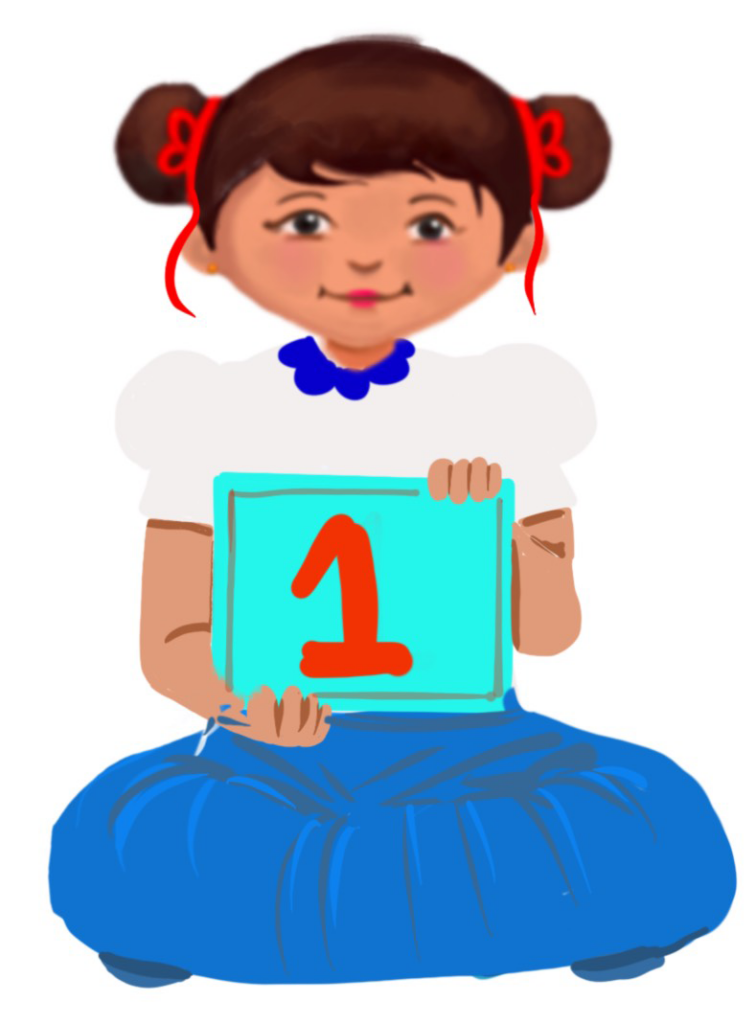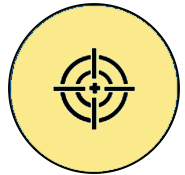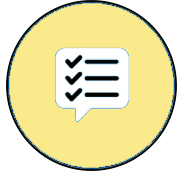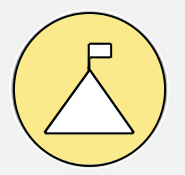
Using Computers – Do’s and Don’ts
Class 1
 Objective
Objective
Students will be able to understand the rules before entering the computer lab.
 Prerequisites
Prerequisites
| 1. Fine motor skills: Children should have developed fine motor skills. 2. Hand-eye coordination: Children should be able to coordinate their hand movements. 3. Prior knowledge of parts of the computer is essential if Wordwall is to be used. |
LTM: Activities to improve fine motor skills and eye-hand coordination
 Goal
Goal
All
All children will be able to understand that it’s computer hour and they have to be disciplined.
Some
Some children will be able to follow certain rules while entering the computer lab.
Few
Few children will be able to follow all the rules while entering the computer lab.
Operational Definition:
All – This gives the goal, which is the minimum that the teacher must achieve for all students in the classroom.
Some – This gives the goal that the teacher may try to achieve for some students in the classroom who can achieve the suggested goal over and above the goal stated for ‘All’.
Few – This gives the goal that the teacher may try to achieve for few students in the classroom who can achieve the suggested goal over and above the goal stated for ‘Some’ and ‘All’.
Materials Required:
Technology
- An audio-enabled computer with an internet connection, smartboard projector and screen.
- All devices like laptops, tablets and desktop computers with accessibility features enabled.
- Screen readers like JAWS and NVDA.
- Large keyboards, built-in screen magnifiers, hearing aids, text-to-speech and speech-to-text software.
- Voice recognition software like Siri, Windows Speech Recognition, etc.
- Headsets.
- Student writing or typing tools.
Teacher Materials
- Whiteboard and markers or blackboard and chalk.
- Pre-teach vocabulary cards, communication cards and worksheets.
- Lesson videos.
Student Handouts
- Handout 1: Communication Cards
- Handout 2: Yes or No Cards
- Handout 3: Worksheets
Print Preparation
The teacher will print, copy or laminate (wherever applicable):
- Communication Cards for students
- Yes or No Cards for students
- Pre-teach vocabulary cards
- Worksheets for students
- Cue cards
Preparation for the Activity:
- All the learning and teaching materials needed for this lesson plan must be ready before the lesson begins.
- Ensure that there are enough copies for all children. Multiple copies can be made by photocopying too.
- Please have the assistive technologies and accessibility features ready for your inclusive classroom.
Setup for transacting the lesson:
This topic must be taught in the classroom or a computer lab.
1. Song – I Follow the Rules
Asset Objective: Learners can follow the rules in a computer lab.
Children can learn to sing this song by watching the provided video. The teacher may discuss the message about rules as conveyed in the lyrics of the song.
Obeying rules, sure I do,
At school and play and at home too
Respect parents and teachers; I do
I care, I share and be kind with friends, too
Please and thank you, I always use
Being polite is what I do,
It makes me feel good
To follow these rules, at home, at school and everywhere!
LTM: I Follow the Rules Vocabulary with Meaning
LTM: Communication Cards
Video: I Follow the Rules
Video: I Follow the Rules with ISL
Instructions to the teacher:
The teacher could play the video and make all the students listen to the music and do the appropriate actions as shown in the video.
2. Social Narrative – I Attend Computer Class at School
A social narrative is a tool to help individuals with special needs, particularly those on the autism spectrum, better understand social situations and how to respond to them appropriately. Here is a social narrative about how to attend a computer lab. The videos can be shown in an inclusive classroom.
Social Narrative
Click to access Social Narrative
3. Happy Schools Raise Happy Children
Asset Objective: Children will learn to be helpful to their fellow students.
Video: Happy Schools Raise Happy Children
Video: Happy Schools Raise Happy Children with ISL
LTM: Happy Schools Raise Happy Children Comic
4. Do’s and Don’ts with a Computer
Asset Objective: Children learn to follow the safety rules while using computers.
1. Be safe/careful
a. A computer has many wires.
b. It works on electric power.
c. We should not pull the wires.
d. You have to ask the teacher when you want to turn ON/OFF.
2. Be gentle
a. Keys should be pressed gently.
b. Do not pull wires.
3. Keep it clean
a. Cover it when not in use.
b. Do not eat/drink near the computer.
4. Sit straight
a. You can see clearly if you sit straight.
b. Fold your hands and use the mouse only when needed.
5. Share
a. Take turns while playing.
Video: Do’s and Don’ts with a Computer
Video: Do’s and Don’ts with a Computer with ISL
LTM: Do’s and Don’ts with a Computer Cue Cards
Follow-up activity
1. Why should we follow the rules in a computer lab?
Suggested Answer: Answers could vary
So that we…
– may not damage the computers
– may not dirty the computer area
– may not disturb others working on the system
– can protect ourselves from any accidents or injuries
– can focus and concentrate on our work.
2. What will happen if we don’t follow the rules?
Answers could vary
– may get a red card
– may have to share computer time with many children
– may damage the computers
– may dirty the computer lab.
3. What will happen if we follow the rules?
Suggested Answer
– Rewards
– Compliments
– Stickers
– Extra time
5. Do’s and Don’ts with a Computer – Sorting Activity
Asset Objective: Using the picture cards, learners can discriminate between the do’s and don’ts while using a computer.
Prerequisite: Children should have seen the video ‘Do’s and Don’ts of the Computer’.
Aim: To discriminate between the do’s and don’ts of a computer.
Resources required: Print the pictures, laminate them and attach the velcro.
Procedure: The teacher has to tell the children what the picture is about and ask them to place it in the correct column.
Observation: Children will discriminate between what to do and what not to do while using a computer.
Conclusion: This activity will help the children to discriminate between the do’s and don’ts when using a computer.
LTM: Do’s and Don’ts with a Computer – Sorting Activity
LTM: Do’s and Don’ts with a Computer – Sorting Activity Printables
Wordwall: Do’s and Don’ts with a Computer – Sorting Activity
6. Design a Computer Lab Rules Poster
Asset Objective: Students can design a poster on computer lab rules.
Aim: To bring out students’ creative expression and gauge their knowledge on the topic – Computer Lab Rules
Resources required: Cutouts of the pictures, 5 chart paper, glue, scissors, coloured pencils, papers, pencils, erasers, ruler.
Setting for the activity: Peer activity/Group activity
Type of activity: Creation
Preparation for the activity:
Divide the students into five groups.
Name the groups as keyboard, monitor, CPU, mouse and printer.
All the printouts provided to students must be taken before the activity.
Chart paper, glue, scissors, coloured pencils, pencils, erasers, rulers, etc., must be provided.
Role of the teacher: Facilitator
Procedure:
The teacher shows the poster to all the children.
The students can draw or cut and paste the pictures on the chart.
Children who are good at writing should be allowed to write on the chart.
Observation: Students will work in groups and understand the do’s and don’ts of computers by presenting and having discussions.
Conclusion: This activity will help students remember measures to take when handling computers.
Suggested variation in rules:
Allow additional time to finish the project for children with disabilities.
LTM: Computer Lab Rules Poster
LTM: Enlarged Computer Lab Rules Poster
LTM: Computer Lab Rules Printables
Video: Design a Computer Lab Rules Poster
Suggested scaffolds for assistance and practice:
1. Display the sample poster in the class.
2. The teacher has to tell the children to divide the chart into nine boxes with the ruler for alignment and organisation of the pictures.
3. The teacher must guide the children in sketching/drawing.
4. Once they have sketched the outline, they could be allowed to colour the pictures of their choice.
5. Children who cannot draw must be given the printouts and allowed to paste them on the chart.
6. Tell the children how much space they must leave for the headings and the body text.
7. Help the children structure the information on the poster by breaking down the content into sections and deciding where to place which piece of data on the chart.
Discussion Questions:
1. What will happen if you sit very close to the computer?
Suggested Answers: Answers will vary. Eyes will get strained.
2. What will happen if you bang on the keyboard?
Suggested Answer: Answers will vary. It will be damaged. The keys will come out.
3. What will happen if you pull the mouse?
Suggested Answer: Answers will vary. The mouse will get damaged.
4. What will happen if your friends refuse to share the computers with you?
Suggested Answer: You will be hurt and not get a chance to learn, practise, or work on computers.
Precautions:
Children have to be careful while handling the scissors.
Glue should not be spilt all over.
Cross-Curricular Connection:
Art class
Notes to the teacher:
a. Adaptations for addressing learner variability: Make small groups for poster creation. (5 groups)
b. Engage the students in a conversation about the do’s and don’ts with the computer.
c. Children with disabilities can participate in poster making by involving themselves in drawing, cutting and pasting for the write-up/discussion.
d. Pencil grips will be provided for children with delicate motor skill problems.
e. Adaptive scissors must be provided for children with CP, arthritis and other special needs.
7. Assessment
Adaptations for addressing learner variability:
a. Verbal and written directions have been given in the worksheets.
b. Video with audio is provided so that students can replay it when necessary.
c. Students can express their answers orally to their peer buddy if they face writing difficulties.
d. Screen enlarger.
f. Screen reader for the visually impaired.
g. Slant boards for students with motor challenges.
h. Pencil grips also have to be provided to those who need them.
i. Avaz app or any other AAC app or AAC device could also be provided or children who have communication difficulties can respond by gestures, eye pointing or response cards.
j. Audio recorder
Prerequisite:
i. Children know the meaning of computer, mouse, keyboard, CPU, monitor, do, don’t.
ii. Children should be able to read the words.
Suggested variation in pace:
1. Students could take a few extra minutes to complete the worksheets.
Suggested variation in perceived challenge:
i. Children could also record their responses or answers or use response cards to convey the answers to their peers.
ii. They may also be allowed to dictate their responses (especially students who have visual disabilities).
iii. Students may also be given additional time to complete the worksheet.
iv. Students could take the assessments using the Wordwall.
Suggested scaffolds for assistance and practice:
a. The teacher could help the students while reading the words.
b. Teachers could activate the students’ prior background knowledge by playing the video again.
c. Teachers could break the task into smaller, more manageable parts. Students could also express themselves using gestures or visual aids.
d. Children who can draw a computer could be allowed to draw and the rest have to colour the picture.
Worksheet: Using Computers – Do’s and Don’ts Yes or No
Enlarged Worksheet: Using Computers – Do’s and Don’ts Yes or No
Wordwall: Do’s and Don’ts while using a Computer, True or False
Worksheet: Do’s and Don’ts while using a Computer
Enlarged Worksheet: Do’s and Don’ts while using a Computer
Wordwall: Do’s and Don’ts while using a Computer
Worksheet: Match the Word
Enlarged Worksheet: Match the Word
Try Me: Computer Manners
8. Adaptation and Modification: Using Computers Do’s and Don’ts
Adaptation and Modification: Using Computers – Do’s and Don’ts
9. Assistive Technologies and Adaptive Devices
Assistive Technologies and Adaptive Devices
Teacher Resource Document
| Source and Attribution of images: All images used in the above Assets and Aids are originally created/licensed. |
| This digital material has been developed by the Sri Sathya Sai Vidya Vahini Inclusive Education, a unit of Sri Sathya Sai Central Trust, Prasanthi Nilayam, as a collaborative offering in the service of our nation. |